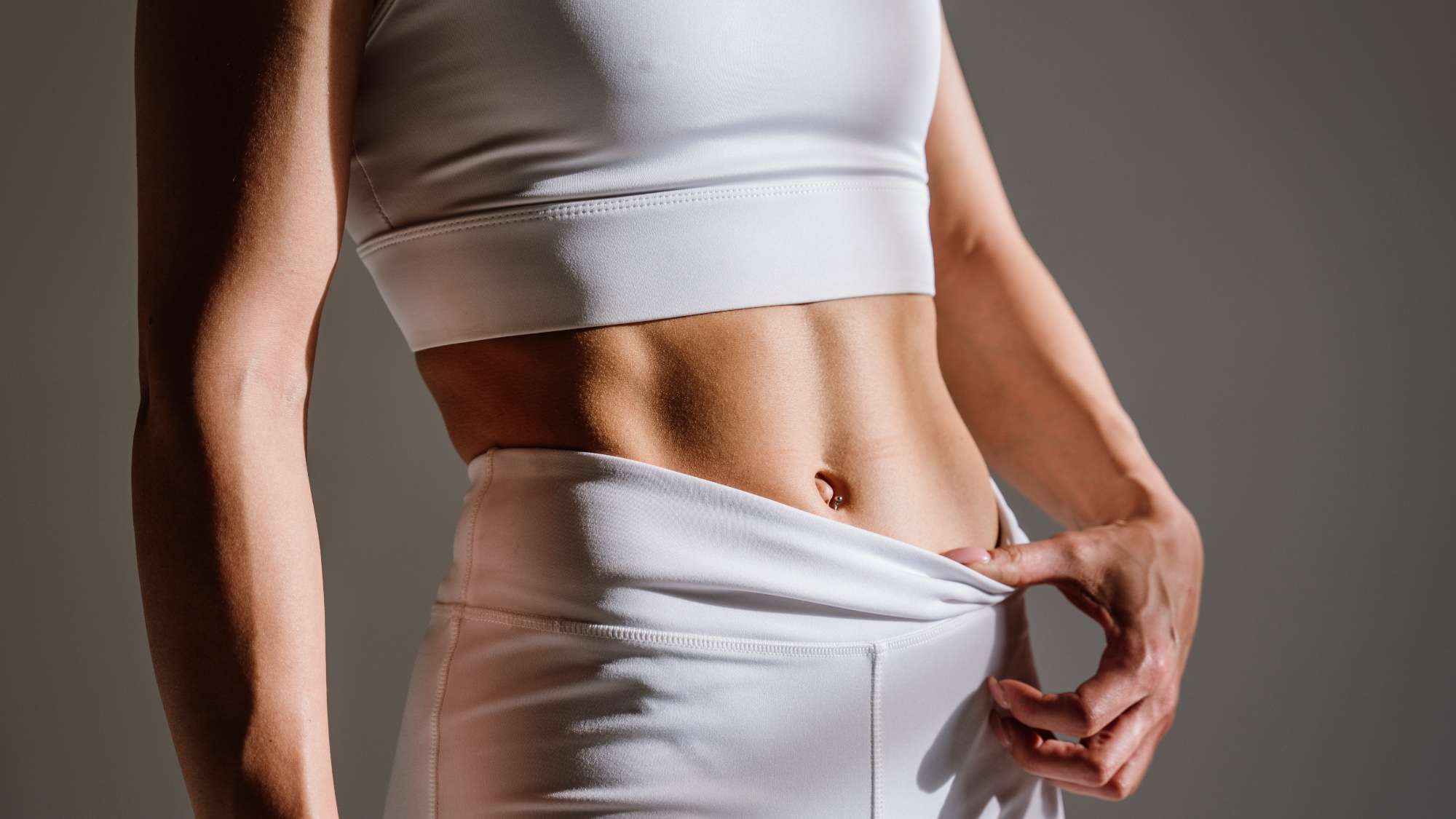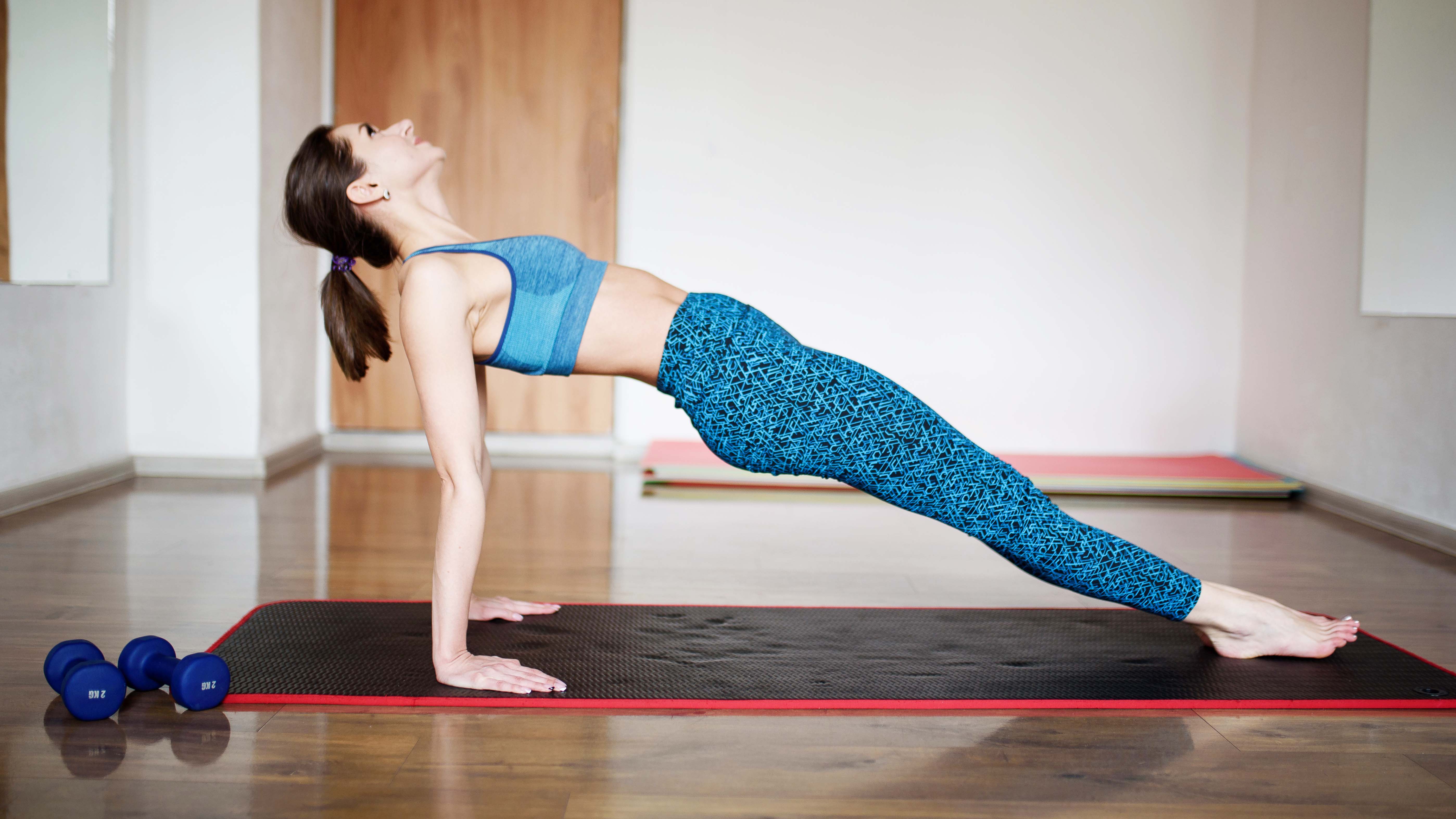This plank variation worked my hamstrings, abs, and pelvic floor — here’s why I recommend it
If you’ve mastered the plank, try it in reverse

Planks are one of the best exercises for building deep core strength, but did you know that you can do planks in reverse?
Reverse planks target the back of your body (also known as your posterior chain), working muscles like your hamstrings, glutes, lats and deltoids. Your core muscles like the rectus abdominis will have to kick in too, making the reverse plank a true full body exercise.
I’ve been slowly returning to exercise after having a baby, and most of my current routine has focused on rebuilding my core. I’ve done my fair share of planks in the past, but the reverse plank seemed like it could be an even more effective move given my current goals. So, I decided to roll out my yoga mat and try a minute of reverse planks every day for a week.
How to do a reverse plank
Reverse planks don’t require any equipment, but using a yoga mat for support is recommended.

- Sit upright with your legs extended in front of you.
- Place your hands on the ground slightly behind your hips, with your fingertips pointed towards your feet.
- Squeeze your glutes, roll your shoulders back, and lift your hips off of the ground.
- Keep your body in a diagonal line — don’t allow the hips to sink towards the floor.
- Hold for the desired duration.
If you’re new to working out or have never tried a reverse plank before, try meeting with a certified personal trainer to ensure correct form.
I did a minute of reverse planks every day for a week — here’s what happened
Admittedly, I was a bit intimidated by my initial goal of one-minute reverse planks. Here’s what I experienced as the week progressed.
I had to reduce my time
Trying to start with a full, uninterrupted minute of reverse planks was a lot more than my postpartum body could handle. That’s been one of the biggest challenges in getting back to my workouts: realizing that I can’t just pick up where I left off.
Get instant access to breaking news, the hottest reviews, great deals and helpful tips.
I decided to slash my initial goal from one full minute down to four sets of 15 seconds, with some rest in between each attempt. Even these shorter intervals were difficult for me at first, but I was able to rebuild my strength somewhat quickly. By the last day of the week, I had worked my way up to two sets of 30-second reverse planks.
Even if you’re an experienced athlete, start with 15-30 seconds of reverse planks until you’re fully comfortable with the form.

My hamstrings were the most fatigued
After the first two days of reverse planks, my hamstrings were killing me. They hadn’t been that sore since I first started barbell deadlifting over a decade ago.
This was a telltale sign that my glutes were still really weak from pregnancy and childbirth. I’d been working on some basic bridges and hip hinges, but clearly, those moves hadn’t gotten the muscles back to their former strength levels. Now that I was trying reverse planks, my hamstrings had to support the full load of my body without much help from my glutes.
I decided to add a few more reps of glute bridges into my lower body days to see if I could make up for the deficit. That seemed to help a little — by the end of the week, my glutes felt much more actively engaged when holding the reverse plank.
My neck was sore
I’ve done reverse planks in the past, but not with any sort of consistency. Trying them this week reminded me of an issue I always had with this exercise — my neck ends up hurting.
At first, I tried keeping my head aligned diagonally with my shoulders, hips, and heels, but that caused a ton of tension in the front of my neck. Then I tried flexing my neck, but that also tensed my neck and shoulders. I really had to focus on staying relaxed and letting my core muscles do the work.
I got the hang of it by the end of the week, but even on day seven, my neck was still a little sore. It was another sign that I have a lot more glute and core rebuilding to do.
I felt stronger by the end of the week
On the plus side, by day seven, I could definitely see the benefits from a week’s worth of reverse planks. Climbing stairs was easier, my posture improved, and my abs felt like they were finally “waking up.”
Seeing these full-body advantages made me decide to keep reverse planks in my workout routine, especially for the time being. They’re a very efficient way to work a lot of important muscle groups at once. I have a two-month-old to care for, so keeping my workouts quick and efficient is paramount.
The benefits of a reverse plank
Reverse planks are a great way to strengthen the entire posterior chain. This exercise requires effort from your glutes, hamstrings, erector spinae (lower back), hip abductors, hip flexors, rectus abdominis, transverse abdominis, lats, and posterior deltoids. If you’re short on time, a quick round of reverse planks will do the job of several different exercises.
More from Tom's Guide
- No more crunches! Build a strong, stable core with these 5 standing ab exercises
- Forget sit-ups — sculpt your abs in 10 minutes with this standing dumbbell workout
- I tried this 10-minute standing dumbbell ab workout and it torched my core

Jennifer Rizzuto is a freelance writer and certified personal trainer based in Long Island, NY. She covers various fitness-related topics and reviews for Tom's Guide. She also writes sketch comedy and short films, and performs frequently as an actor, singer, and improviser. When she's not writing, working out, or performing, you'll find her trying to convince her husband to get a dog.
You must confirm your public display name before commenting
Please logout and then login again, you will then be prompted to enter your display name.
